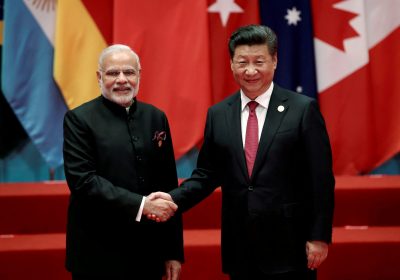Author: Deepa Ollapally, George Washington University
Despite Prime Minister Narendra Modi’s ‘neighbourhood first’ policy, India has witnessed some serious and surprising diplomatic setbacks in its near region in the recent past. That this has happened with friends and rivals alike should be a cause for concern for New Delhi. It may be time for India to try a different approach to regional diplomacy and re-learn the old adage ‘keep your friends close and your enemies closer’.

Modi’s neighbourhood initiative focusses on engaging and cultivating India’s smaller neighbours. But it is worth remembering that China is a neighbour too. The two share a 4056 kilometre border — some of it hotly contested as the 2017 military standoff at Doklam demonstrated. And right now, China’s growing influence in South Asia is proving to be the biggest obstacle for New Delhi in ensuring that the region’s historical ‘India first’ orientation is not fundamentally altered.
Relations with India’s traditionally closest neighbour, landlocked and India-dependent Nepal, have drastically plummeted. The tiny but strategically located Maldives almost slipped away from India’s orbit for good in 2018. Sri Lanka’s India-tilted political leadership has come undone and is spinning out of control. Bangladesh is the only bright spot among friends.
As for adversaries, India’s relations with Pakistan are stuck in a tense stalemate with little prospects for improvement under Prime Minister Imran Khan’s new military-backed regime. And India–China relations hit a new low in 2017, with the Himalayan face-off only deepening distrust between the two rivals.
A common and even causal factor in India’s declining fortunes with its smaller neighbours is the unprecedented rise of Chinese influence in these countries. That China’s involvement is concentrated in building hard infrastructure, such as dual-use ports, with loans and investments that dwarf other states’ economic impact, paves the way for potentially overweening Chinese influence.
Sri Lanka is an object lesson. When the country found itself unable to pay back the huge Chinese loans that it had recklessly taken under Mahinda Rajapaksa’s pro-China regime, Colombo was forced to sign a 99-year lease in 2017 for the strategic Hambantota port in a debt-for-equity agreement that recalled colonial practices.
Even the more balanced government that came after Rajapaksa is going ahead with Colombo Port City — an entirely new metropolis that will be created from reclaimed land, and built and financed by China to the tune of US$15 billion. In 2015, Sri Lankan Prime Minister Ranil Wickremesinghe had suspended the project citing damage to the coastline. This angered the investor, China Communications Construction, which stood to suffer substantial losses. By 2016, the project was back on track.
The case of the Maldives is even more striking. Until 2011, China did not even have an embassy in the capital Male. By that time India’s sway over the Maldives was near complete, with New Delhi militarily intervening to thwart a coup against the ruling government in Male in 1988. In 2014, India was the first nation to respond when nearly 100,000 Maldivians lost access to safe drinking water and the government declared a state of emergency.
Fast forward to 2018 and the Maldives–India picture looks almost unrecognisable. China is now clearly the dominant player in the Maldives, with Beijing’s three largest investment projects in the country amounting to more than 40 per cent of the Maldives’ GDP. Debt quagmire along the lines of Sri Lanka seems inevitable. Although the political pendulum swung slightly back in New Delhi’s favour with a new government in September 2018, India cannot take anything for granted.
Given these types of developments, much of the Indian strategic community and several media outlets appear to have concluded that rivalry with China in the neighbourhood is a foregone conclusion, with little room for cooperation or real engagement. But an unexpected glimmer of cooperation between India and China in October 2018 suggests that the two countries may be looking to reform their increasingly adversarial relations in the region.
In an unprecedented move, the two countries jointly trained 10 Afghan diplomats at the Indian Foreign Services Institute in New Delhi as part of a new Afghan initiative that Chinese leader Xi Jinping and Modi hatched at Wuhan in April 2018. This in turn came out of a novel ‘two plus one’ model of economic cooperation between India, China and a third country that China had floated. India and China have long been on opposing sides in Afghanistan, with China’s partner Pakistan openly resisting India’s presence there, making the new effort even more remarkable.
Whether this is a harbinger of better relations between the two Asian giants is too early to say, but Indian leaders should seriously entertain the ‘two plus one’ idea as one more way of shoring up India’s presence in its near region.
This does not mean that India should not improve its border infrastructure or raise its maritime domain awareness in the Indian Ocean. After all, the adage of keeping enemies closer emanates from hard-headed realism and, in the process, it just might prove to be a boon for India’s own faltering ‘neighbourhood first’ policy.
Deepa Ollapally is Research Professor of International Affairs and Director of the Rising Powers Initiative in the Elliott School of International Affairs, George Washington University.





